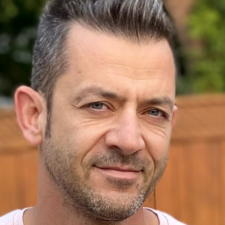The evolution of artificial intelligence is spreading across the gaming industry. While some are experimenting with the likes of ChatGPT to create code or lines of dialogue for characters, others are using innovations such as MidJourney to create orginal art. But what about the more specific field of character creation?
We spoke with YOOM’s head of gaming for AI and 3D leader, Nir David, on the tech company's 3D character creation pipeline that uses the power of AI to cut down on the costs and time it takes to animate a 3D model.
Pocketgamer.biz: Tell us a little about yourself and your experience in the gaming industry
Nir David: As the former director of strategic partnerships at Playtika, I successfully forged and managed vital relationships with industry giants such as Facebook, Apple, Google, Amazon, Windows, and Samsung. My role encompassed developing and executing go-to-market plans, driving distribution growth, enhancing product features, generating benchmark reports, and overseeing various operational aspects.
Through these efforts, Playtika emerged as a pioneering force and strategic leader in the mobile gaming arena. Prior to this, I spent over five years at Matomy, where I played a key role in enhancing the company's brand by establishing strong connections with renowned developers such as Zynga, EA, King, and Kabam.
What is it about YOOM that stood out to you?
The gaming industry is currently experiencing an unparalleled wave of innovation across multiple platforms. From mobile and PC to console and VR, each sector is rapidly evolving, striving to optimise the creation pipeline for maximum effectiveness.
Character customization has emerged as a focal point of attention within this dynamic landscape. Today's gamers consistently emphasise the astonishing customization capabilities offered by products like Street Fighter 6 or the immersive realism portrayed in NPC interactions, exemplified by Red Dead 2. These features serve as critical benchmarks for assessing the completeness of a game upon its launch. Failing to establish these elements effectively from the outset can significantly undermine a new game's credibility, making it challenging to regain trust even with post-launch patches or updates.
Here at YOOM, we have taken a forward-thinking approach to character development, leveraging the latest trends and innovations in the industry. Our solution empowers studios to streamline the development process, enabling them to allocate more resources to the myriad of other crucial aspects necessary to meet the ever-increasing standards of the modern gamer. By incorporating these cutting-edge techniques, we help studios deliver a complete, immersive gaming experience that resonates with players from day one.
How exactly does YOOM work?
YOOM's groundbreaking technology revolutionises the character creation pipeline, offering a highly efficient solution that eliminates the need for sensors or green screens. By capturing the model or talent through a simple video recording, YOOM's platform leverages deep learning algorithms to preserve the fidelity of motion and capture. The result is an industry-standard output - a single mesh with a single texture - that seamlessly integrates into any pipeline tool used by developers.
Traditionally, animating a minute of content would take months of labour-intensive work. However, with Yoom's innovative approach, this process can be completed in a matter of days. By significantly reducing the time required for animation production, YOOM empowers developers to expedite their workflow and focus more on bringing their creative visions to life.
How do you see the evolution of artificial intelligence impacting the gaming industry in the years to come?
It is essential to develop appropriate guidelines for AI's responsible and effective use.Nir David
The potential for AI integration in gaming is vast, touching nearly every aspect of the industry. However, careful consideration must be given to whether it should be pursued in every case. For instance, when it comes to narrative systems, AI's reliance on existing data points limits its ability to generate truly creative and original stories. This raises concerns about the erosion of originality in game narratives.
Nevertheless, AI integration can be immensely valuable in various other areas of game development. However, even in these cases, it is crucial to establish clear boundaries to ensure that AI remains within the scope of a creator's vision. A notable example is the recent NVidia demo, where gamers can engage with AI characters through speech. While this integration has the potential to revolutionise gaming, it necessitates the implementation of guardrails to prevent characters from making inappropriate or off-topic statements. Avoiding situations where in-game characters discuss real-world events, which could generate unwelcome trends on social media, is of utmost importance.
AI is undoubtedly a permanent fixture in the gaming industry, but, as with any other sector, it is essential to develop appropriate guidelines for its responsible and effective use. By establishing the right framework, we can harness the power of AI to enhance gaming experiences while upholding game developers' integrity and creative intent.
How long does YOOM take to create a fully realised game-ready 3D character?
The processing time required for capture and rendering depends on several factors, including the duration of the performance and the available processing power. As a general estimate, it typically takes a few hours to process each minute of animation.
Can YOOM be utilised by studios big and small? And for mobile development?
YOOM's versatile capabilities extend across various platforms, catering to the needs of the gaming industry, including mobile, console, PC, and beyond. Recognising that development challenges exist for studios of all sizes, YOOM has positioned itself as a valuable partner for companies across the spectrum.
Our goal is to enable teams to generate fully rigged, skinned, and animated characters based on both text and concept inputs.Nir David
Larger studios often face heightened expectations, demanding top-notch quality and cutting-edge features. YOOM rises to the occasion, providing the necessary expertise and resources to meet these ambitious goals. On the other hand, smaller studios may have limited in-house capabilities, making it difficult to achieve their desired vision. YOOM recognises these challenges and collaborates closely with smaller studios, offering the support and tools necessary to bridge the gap and unlock their creative potential.
What are the core reasons for opting to use a platform like YOOM?
We are offering game developers cost savings and shorter development cycles. Our platform empowers studios to create a large-scale cast of main and supporting characters at an exceptional level of quality and fidelity.
Can you share any current plans or what we can expect to see from YOOM over the rest of 2023?
We are dedicated to pushing the boundaries of character creation with our ongoing development of automatic rigging and generative AI capabilities. Our goal is to enable teams to generate fully rigged, skinned, and animated characters based on both text and concept inputs.
For instance, if a developer desires 300 unique variations of a stylised character, they can submit the concept, and our technology will produce 300 distinct iterations. This empowers developers to efficiently explore a wide range of character possibilities, saving time and expanding creative potential.






















